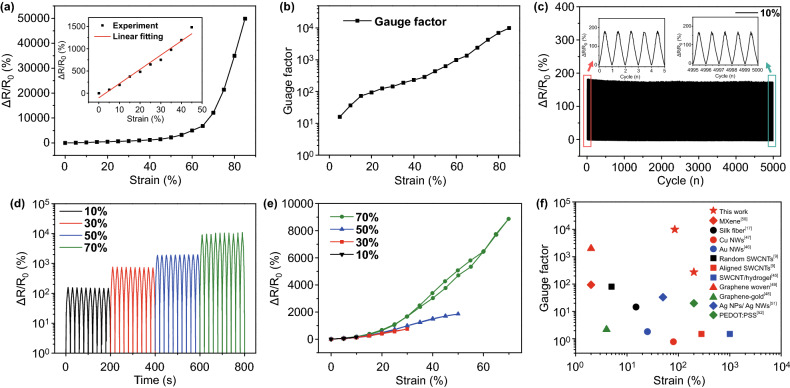Fig. 3.
Sensing properties of CNT-based strain sensors. a Relative resistance response of CNT-based strain sensors versus applied strain. b Gauge factor of CNT-based strain sensors versus applied strain. c Relative resistance change versus applied strain over 5000 cycles. d Relative resistance change versus applied strain with increasing maximum strain from 10% to 70%. e Hysteresis curves of the stretch/release cycles under different maximum applied strain. f Comparison on gauge factor (GF) and maximum strain between our strain sensors and the recently reported strain sensors, which constructed by different conductive materials, including MXene [50], Silk fiber [17], Cu Nanowires (NWs) mesh [47], Au NWs [46], Single-walled carbon nanotubes (SWCNTs) [9], SWCNT/hydrogel [45], graphene woven microfabrics [49], graphene-gold mesh [48], Ag Nanoparticles (NPs)/Ag NWs [51] and PEDOT:PSS [52]

